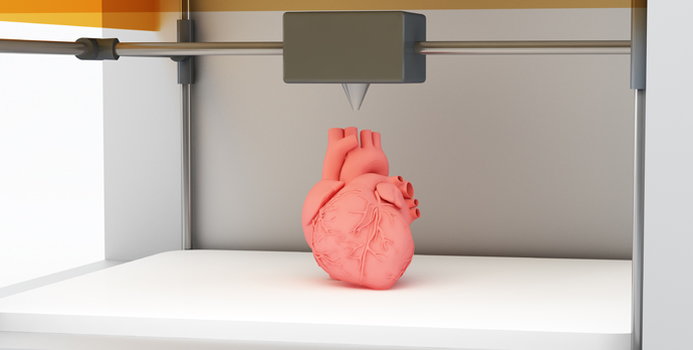Though printing a human might seem like something straight out of a science fiction movie, scientists believe it's not far off.
1. They can print embryonic stem cells.
Stem cells have the ability to grow into many different types of tissue, making them invaluable in the treatment of numerous diseases and health conditions. Back in early 2013, scientists from the University of Edinburgh described a cell printer capable of producing living embryonic stem cells. The article, which was published in Science, pointed to the printer’s broad-ranging applications—from creating tissue in order to test pharmaceutical treatments to growing organs.
2. Some doctors are already using them to print blood vessels and heart tissue.
Nearly a decade ago, doctors from the University of Missouri in Columbia authored a study that described the printing of blood vessels and cardiac tissue that was even able to “beat” just like a real heart. The doctors went on to found Organovo, a company that's making similar products available on the market.
3. They could be used to help treat burn victims.
The past few decades have seen some significant advances in engineered tissue, and particularly skin. Artificially engineered skin has been used to treat burn victims and patients suffering from skin diseases. Scientists at the Laser Center Hannover in Germany recently laser-printed skin cells, making 3D-printed skin the latest development in this rapidly advancing field.
4. Can 3D printers heal a broken heart?
Researchers are hard at work developing a 3D laser-printed “heart patch” that could be used to treat a number of heart conditions. Thus far, researchers at the University of Rostock in Germany have tested the patches in the hearts of rats with promising results.
5. They may be able to print bones and cartilage.
3D printers are capable of printing more than organs and tissue—recent advancements also include efforts to print parts of the skeletal system. In 2011, the same group of scientists working at the Laser Center Hannover used a 3D laser printer to create stem cell grafts capable of growing into bones and cartilage.
6. Researchers are using printed cells to study cancer.
Another exciting application of 3D printing involves using cells to study diseases and develop and test therapies the in the lab. Research that uses printed ovarian cancer cells, for instance, is already underway, and laboratory studies using printed cells can now investigate tumors in a more systematic way.
7. The next frontier: printing organs?
The organ transplants of the future might not require donors at all. Instead, replacement organs could be grown from stem cells and implanted into the host. But this “future” is already a reality. In a TED talk given in 2010, Dr. Anthony Atala used stem cells to successfully grow and transplant a bladder into a patient whose bladder was failing.
[Image via Shutterstock]



